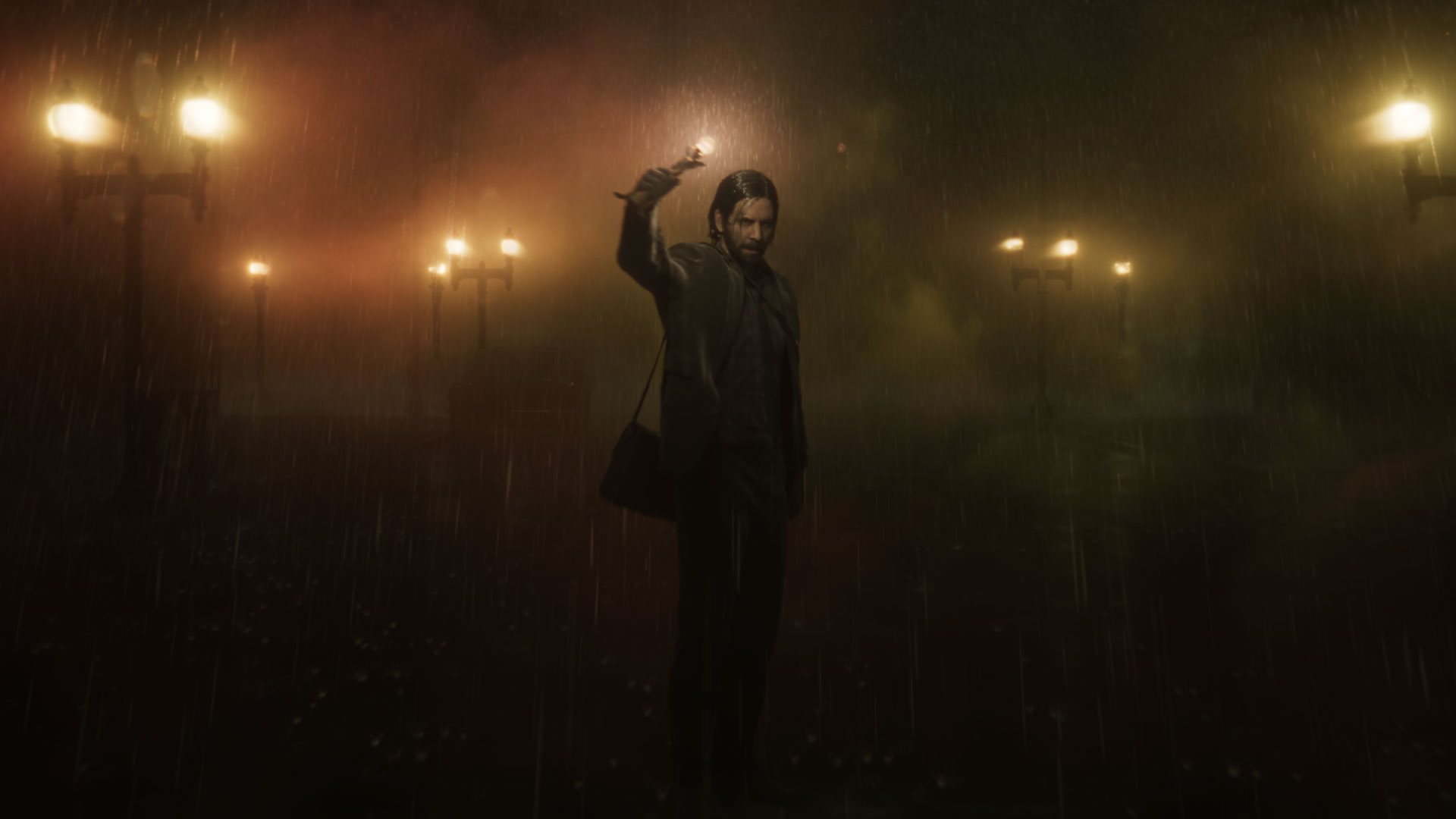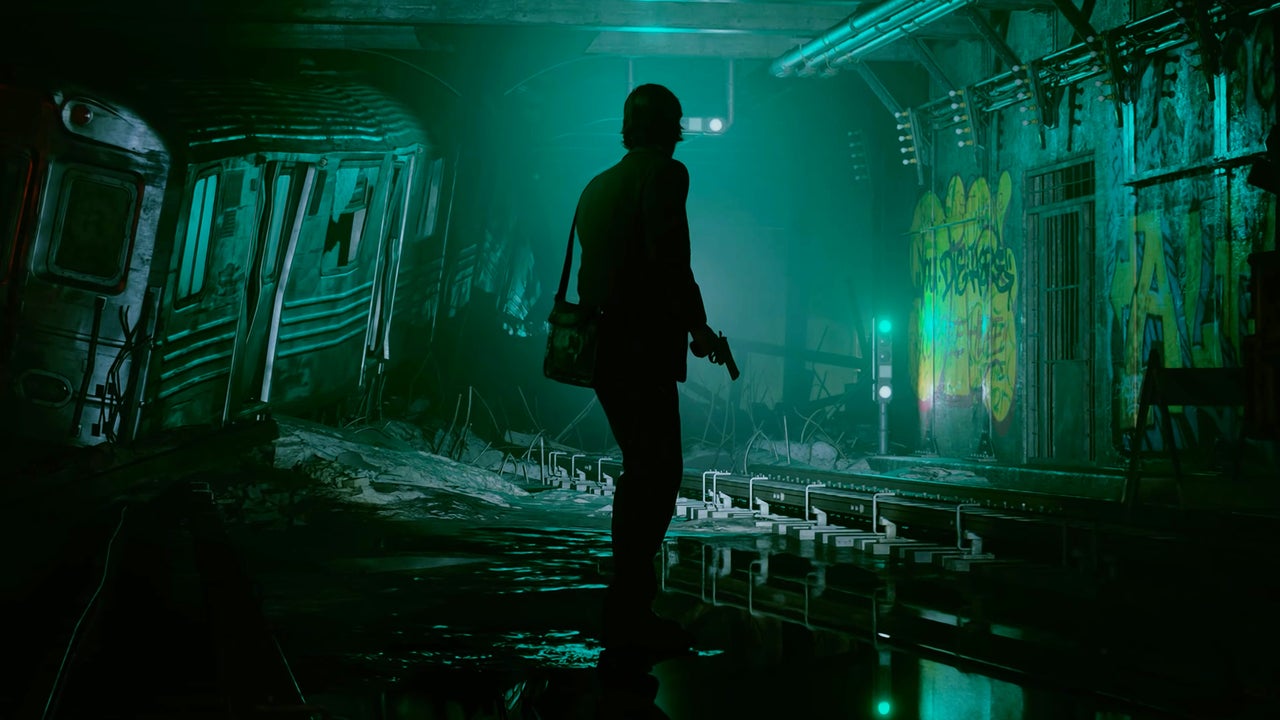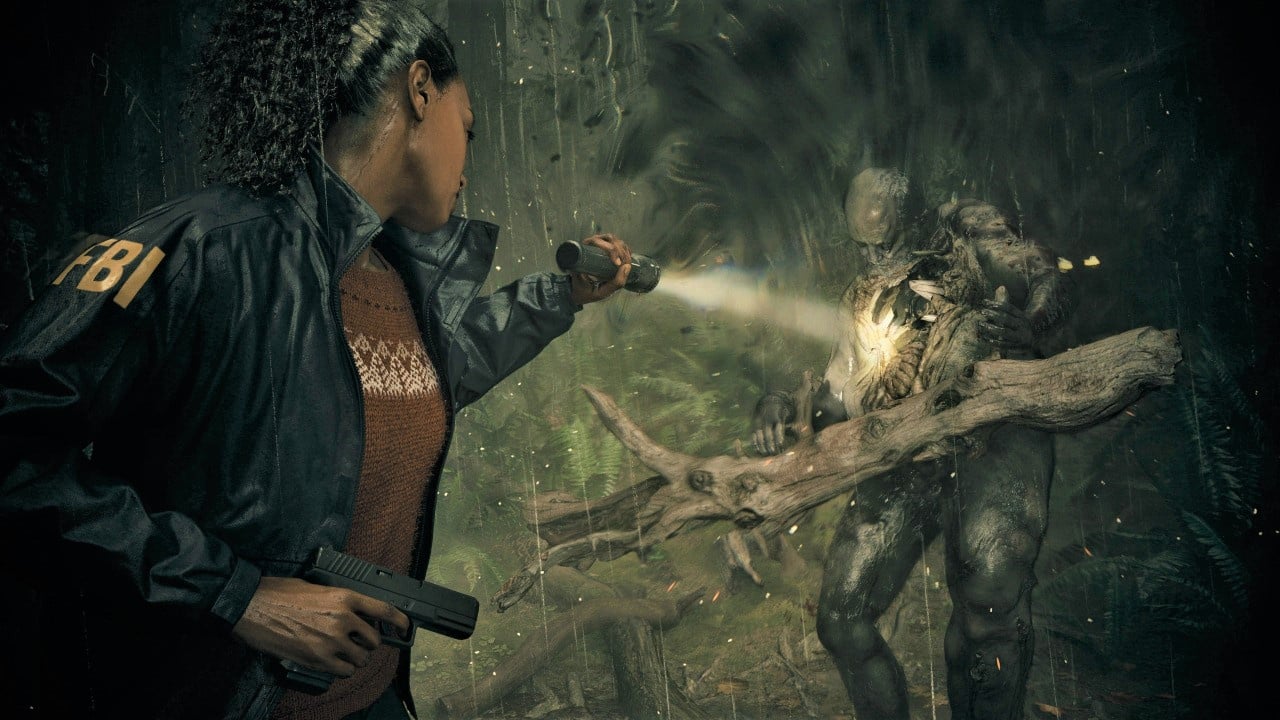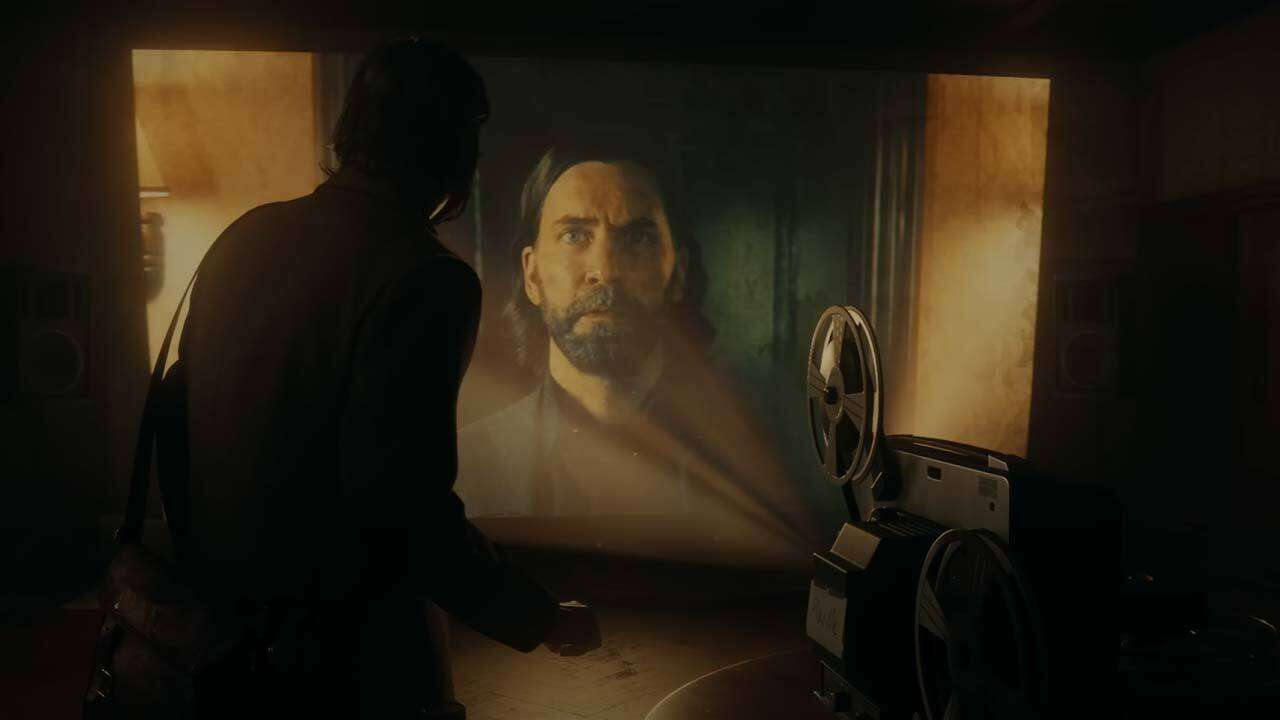Title – Alan Wake 2
Platforms – PS5, Xbox Series X/S, PC
Release Date – October 27, 2023
Developer – Remedy Entertainment
Publisher – Epic Games
MSRP – $59.99
ESRB – M for Mature
Disclaimer – Alan Wake 2 was reviewed on the PlayStation 5. Gaming Instincts is an Amazon Affiliate and does gain financial benefits if you choose to purchase this product on this page.
“It’s not a lake; it’s an ocean.” Thirteen years elapsed before I began to grasp the essence of that phrase, and truthfully, I’m still navigating its depths without a definitive answer. If you venture into Alan Wake 2 yearning for resolutions, you’re in for a letdown. Remedy Entertainment thrives in ambiguity, delivering an intricate and elaborate horror narrative reliant on metanarrative elements and the fusion of various media. It may sound pretentious, but the game cleverly acknowledges and embraces its campy nature.
Now, onto the prevalent question: “What about the gameplay?” Admittedly, the combat, in the heat of the moment, is lacking. However, when considering the amalgamation of tone, settings, and sheer creativity, deeming Alan Wake 2 a lackluster game becomes a challenge. Here’s our comprehensive review of Alan Wake 2.
The Story – Ambiguously Thrilling
At its core, Alan Wake 2 follows two protagonists: Saga Anderson and the titular character, Alan Wake. Saga, an FBI detective, delves into investigating a series of murders in Bright Falls, the backdrop of the initial game. Along the investigation, Saga starts to question her reality. Meanwhile, Alan is trapped within the Dark Place, a dimension capable of shaping reality through creative impulses. For thirteen years, he’s been captive, fervently scripting horror novels to escape, his written words materializing in the tangible world.
This synopsis merely scratches the surface of Alan Wake 2’s intricate narrative web. Delving deeper would rob you of the experience; the game is best encountered with minimal foreknowledge of its storyline. Despite its perplexities, the game adeptly maintains its central premise. However, unraveling the mechanics governing this world plunges you into a delightful enigma. Although Remedy might not hold all the answers to the universe they’ve crafted, the game skillfully implies otherwise.
I was unfazed by potential plot holes or ambiguities; each enigma seemed intentionally shrouded in mystery. The beauty of Remedy’s work—now a tapestry interlinking Control, Alan Wake, and, to a lesser extent, Max Payne and Quantum Break—is the online discourse swirling around the narrative. Theories enhance the storytelling experience.
Alan Wake 2 provides some concrete answers, addressing lingering queries from its predecessor and ushering in a fresh wave of inquiries. I revel in the decision not to coddle players through a storyline. Even amid ambiguity, one can trace overarching themes and developments, suggesting Remedy’s storytelling prowess. One may argue that Alan Wake 2 sets up future Remedy games more than it tells a consolidated story. Yes, it does set up the future of the Remedy-connected universe, but if you look at the characters themselves, they undergo complete transformations.
Saga Anderson emerges as a relatable protagonist, devoted to her duty yet laced with a hint of humor. She is a commendable addition to the narrative, perhaps even eclipsing her counterpart, Alan Wake. A pivotal moment later in the game solidifies her character development, establishing Saga as a multifaceted persona worthy of revisiting within the Remedy universe.
Alan Wake, equally compelling albeit less endearing, stands out as one of the most intricate characters in gaming history. He embodies pride, deep-seated turmoil, and a self-righteous streak. His yearning to rescue others coalesces with a belief that he’s the sole savior. Intriguingly, these traits bleed into his writing, subsequently, endangering and reshaping reality. Alan Wake 2 probes into the consequences when a prideful, mentally fractured individual shoulders the burden of saving the world. The deviation from the archetypal protagonist renders his character so captivating.
Lastly, Alex Casey, Saga’s partner, deserves a mention. Casey exudes an effortless coolness but remains an enigmatic figure. Resembling Sam Lake, the game’s director, and sounding like Max Payne, he’s a character within Alan Wake’s novels and also integrated into Saga’s narrative. His exclamation, “Who the f*** am I?” encapsulates the game’s convolution, delving into Alan Wake’s fictional realm, the developers’ created world, and the world we inhabit. Let alone the ties to another video game, Max Payne.
Alan Wake 2 epitomizes one of the most audacious narratives in gaming. It’s reminiscent of ‘Inception,’ a tale where reality remains elusive, yet the fundamental storyline remains comprehensible. I laud Alan Wake 2’s storytelling prowess extensively. Nonetheless, its penchant for ambiguity might prove frustrating for those seeking neatly tied conclusions. Personally, I relish the mystique ambiguity brings, and from a narrative perspective, Alan Wake 2 consistently captivates and intrigues.
Gameplay – Elementary Survival Horror with Unforgettable Highs
The gameplay unfolds across two distinct scenes: Saga in Bright Falls and Alan in the Dark Place, allowing you to switch between them at will. This flexibility lets you play through all of Saga’s segments before delving into Alan’s, a choice that initially left me torn. On one hand, it disrupts the pacing, nudging players into determining the game’s sequence rather than relying on the developers’ intended order. Conversely, the ability to switch characters offers a refreshing change when fatigue sets in. The mechanic, with its pros and cons, ultimately has minimal impact on the final assessment. It’s a subjective aspect that doesn’t significantly sway the overall experience.
Let’s begin with Saga, tasked with halting the Cult of the Tree. Her gameplay echoes elements of Resident Evil, navigating intricate environments, collecting resources, solving puzzles, and engaging in combat along the way.
Exploration mostly encompasses forested areas and the town of Bright Falls, including locales like the Sheriff’s office and a retirement home. Getting lost, particularly in the forest where pathways blur, contributes to the eerie ambiance. Surprisingly, this game utilizes the confusion of unclear environments to bolster its thematic atmosphere. Navigation remained appropriately disorienting without becoming overly frustrating.
Despite being a survival horror game, resource management wasn’t a pressing concern. I consistently had enough ammo and flashlight batteries, never feeling starved for supplies. Nevertheless, Alan Wake 2 ventures deeply into the horror genre, provoking startling moments that jolted me out of my seat, a rarity among horror games. However, most of these scares rely on cheap jump scares—a tactic I find somewhat lazy and lacking creativity.
Nevertheless, there are well-crafted, genuinely terrifying moments. The introduction of eerie enemies, moving through the world via floating water puddles, ranks among the best-designed adversaries. A bubbling water jug, for example, induced anticipation of encountering these monstrosities around the corner. There are horrifying sections all over this game, however, the over-reliance on jumpscares gets tiring fast.
Moving to gameplay mechanics, Saga encounters various easy puzzles tied to nursery rhymes, the Federal Bureau of Control’s attempts to communicate with the dark place through art. Solving these puzzles involves matching dolls with corresponding images from the rhyme, offering a unique and creative puzzle-solving experience. These optional puzzles, while mostly straightforward, occasionally require thoughtful consideration. Completing these puzzles triggers slight environmental alterations, leading to charms that offer small but helpful buffs or upgrades for Saga.
Additionally, discovering cult stashes presents players with unique puzzles, some requiring math problem-solving or deciphering environmental clues, providing ammo and supplies as rewards. These puzzles, and the ways the clues are worded, add charm to the game, often injecting humor into the bizarre world of Alan Wake 2.
Combat, unfortunately, represents Alan Wake 2’s weakest aspect. Unlike Remedy’s successful combat design in Control, here, combat feels lackluster, leaning towards clunkiness. Engaging The Taken involves shining light on them until their shield of darkness dissipates, then firing. Enemies endure multiple hits, feeling like bullet sponges and amplifying the clunky combat mechanics, compounded by a relatively slow character.
Moreover, combat lacks a sense of progression; upgrades minimally impact combat dynamics, and the limited weapon variety, including a slow-to-reload pistol, rifle, and shotgun, adds to the underwhelming combat experience. While survival horror typically leans towards deliberate combat, Alan Wake 2’s implementation feels less refined than expected, merely serving as a segue to the next story beat.
Conversely, Alan Wake 2 shines in its environments and objectives. From an old dilapidated coffee-themed theme park to a haunting retirement home, the game excels in atmospheric exploration, especially during trippy sequences. The overlapping of the Dark Place and reality, creating visually striking environments, offers entertainingly bizarre settings. For instance, the dark place will overlay on top of your current environment, combining two settings in a dream-like way. Live-action integration, with actors blending seamlessly into gameplay, adds an extra layer of intrigue and uniqueness to the gaming experience. One time, I was crawling under some rubble, and a live-action face was staring at me from the exit. It’s these weird moments where Alan Wake 2 shines.
The mind place, accessible within Saga’s mind, serves multiple functions, including weapon upgrades, listening to the radio, and viewing manuscripts. The centerpiece, the case board, while initially suggesting a mystery-solving element, functions more as a streamlined quest log. However, its overly streamlined nature occasionally creates a disconnect between player knowledge and character knowledge, interrupting the exploration flow. For example, you may know how to proceed, but you can’t until you pin a paper to the case board. Moreover, tying collectibles exclusively to the case board feels unnecessary and disruptive since you have to pin every single cache or rhyme you find.
Despite these drawbacks, the case board finds a redeeming moment later in the game, offering a standout gaming experience from the year. In a poignant scene, it cleverly intertwines the case board mechanic with storytelling in an impactful way I will not spoil here.
Now, let’s delve into the world of our beloved author, Alan Wake, within the enigmatic realm known as the Dark Place. While Saga’s segments tend to gravitate toward survival horror and detective narratives, Alan’s missions adopt a more surreal quality. Immersed in a dream-like rendition of New York City, each environment exudes a spectacular yet subtly blurred ambiance, creating a navigation experience that’s nothing short of trippy. Ascending stairs might unexpectedly lead to a lower level, a clever portrayal of the dream-like reality Alan traverses.
In terms of gameplay loop, Alan’s journey echoes similarities with Saga’s, albeit with a notable distinction – Alan, in contrast to the seasoned FBI agent, is portrayed as somewhat of a vulnerable figure. His arsenal lacks the abundance of firearms, signaling that his sequences aren’t primarily combat-focused. Within the Dark Place, ominous shadows loom everywhere; most are benign, but some pose a threat. This constant sense of unease keeps players on edge, cautiously observing and analyzing these shadowy figures before engaging, as conserving ammo becomes imperative. This approach masterfully cultivates a sense of horror without resorting to clichéd jump scares.
The pivotal divergence between Alan and Saga lies within the concept of the writer’s room, Alan’s version of Saga’s mind place. Similar in function to the case board, the writer’s room allows players to script scenes into reality. It stands as one of the game’s most enthralling mechanics. The elements you inscribe on the writer’s board wield the power to reshape the surrounding environment, unveiling new pathways. While akin to the streamlined functionality of the case board, the writer’s room exudes a distinct allure. Upon initiating a new scene, a captivating live-action overlay presents Alan typing, and suddenly, the world transforms around you, a visually stunning experience.
Furthermore, Alan possesses a device capable of absorbing light sources within the environment, consequently altering its dynamics. This ingenious mechanic of environmental manipulation elevates the exploration in Alan Wake 2, setting it apart from numerous other games.
Moreover, Alan’s segments birth some of the game’s most iconic moments. Each mission showcases diverse mediums of Alan’s writing—musicals, plays, and movies. The pinnacle of the game, arguably one of the most astounding moments in gaming history, lies within the musical section. Seamlessly blending live-action musical performances with gameplay, this segment is a delightful fusion of fun, campiness, and sheer awe, undoubtedly the standout highlight of the entire game
Visuals and Audio
One of the distinctive features of Alan Wake 2 is the inclusion of songs that conclude each chapter. Much like a TV series, these songs create an interlude after each mission, allowing players to relax and immerse themselves in the music before the next phase begins. The soundtrack in Alan Wake 2 not only pleases the ear but also resonates with the essence of the game. Seamlessly blending various media, the game’s music segments excel, displaying a genuine appreciation for music that significantly enhances the game’s allure.
Visually, Alan Wake 2 is a spectacle in its own right. The portrayal of wind effects in the forest environments is particularly noteworthy, with every tree branch swaying realistically per the wind’s direction. The depiction of the surreal dark settings is equally striking. While Alan Wake 2 may not boast the most cutting-edge visuals of the year, its appearance and performance are certainly praiseworthy, ensuring players won’t be disappointed.
Final Verdict
Alan Wake 2 stands as an outstanding game, albeit with certain caveats. Players must embrace ambiguity and understand that it isn’t a detective game where unraveling the mystery rests solely on the player’s shoulders. However, within its scope, Alan Wake 2 delivers exceptionally well. While there are occasional lulls in combat, the game compensates with several unforgettable scenes. Hence, Alan Wake 2 earns a final verdict of 9 out of 10.
Stay tuned at Gaming Instincts via Twitter, YouTube, Instagram, and Facebook for more gaming news.







